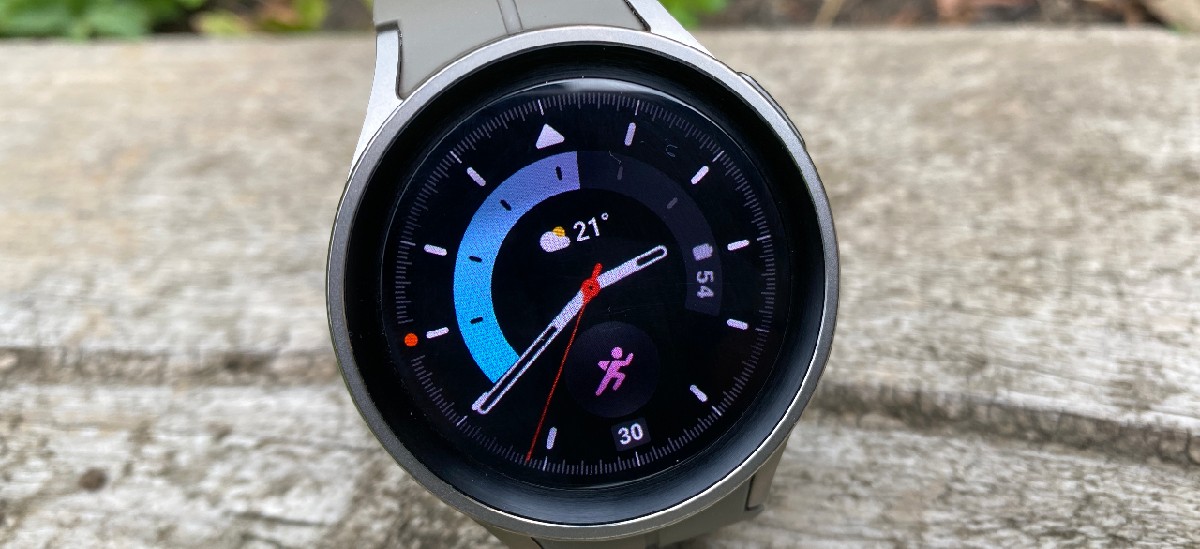Our Verdict
If you’re looking for an attractive Android smartwatch with a long battery life the Galaxy Watch 5 Pro fits the bill, but anyone hoping to use it for more than casual sports tracking will be disappointed.
For
- Attractive
- Long battery life
- Rugged design
Against
- Inaccurate sports tracking
- Annoying wristband
- Inaccurate body composition measurements
- Cheaper Watch 5 offers the same experience
You can trust Coach
The Samsung Galaxy Watch 5 Pro looks great and has a longer battery life than any other Wear OS smartwatch I’ve tested. It’s one of the best smartwatches for everyday use, with good general activity tracking and useful health-tracking features, including blood pressure measurements.
However, the sports tracking is frequently inaccurate, whether you use the native app or a third-party one, and so are the body composition measurements. It’s also undercut by Samsung’s Galaxy Watch 5, which offers most of the same features, even if the battery life and design isn’t as impressive on the cheaper watch.
Samsung Galaxy Watch 5 Pro: Price And Availability
The Watch 5 Pro is available now and the standard watch costs $449 in the US and £429 in the UK, while the cellular version costs $499/£479. That’s a big jump in price from the Galaxy Watch 5, which costs from $279.99/£269 for the 40mm watch and from $309.99/£289 for the 44mm.
Design
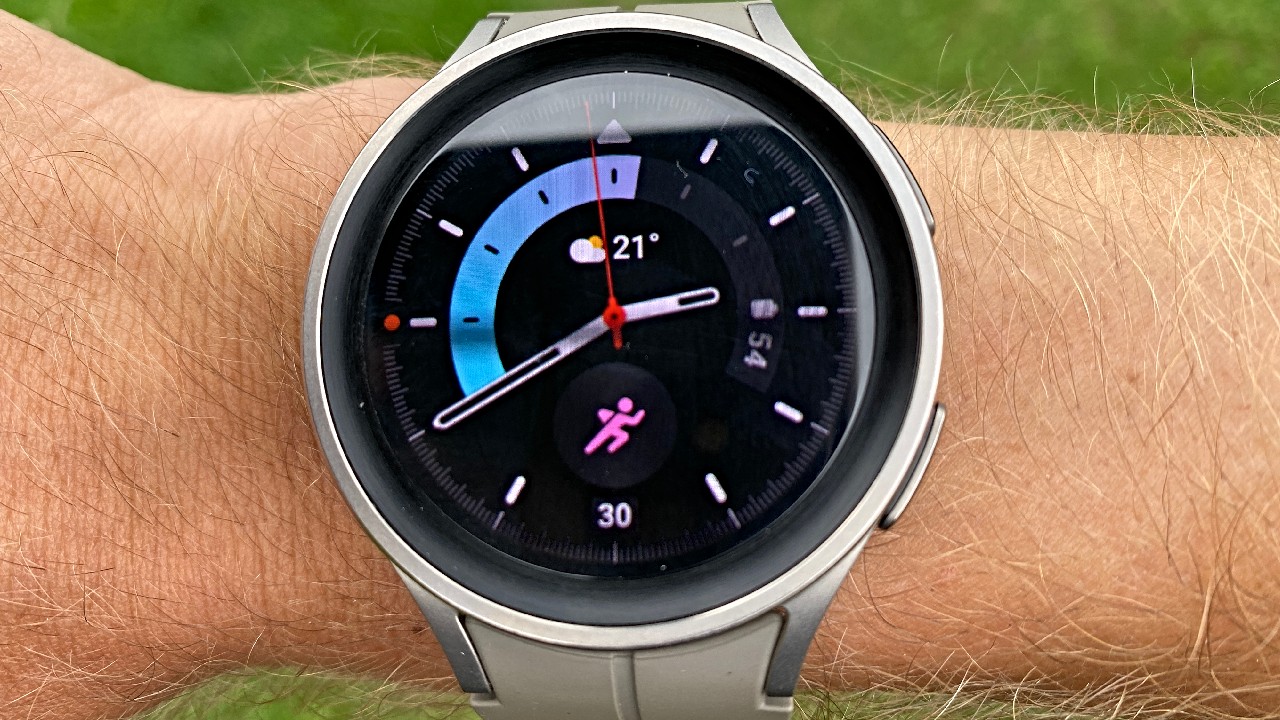
The first change you notice about the Galaxy Watch 5 Pro is that there is no rotating bezel. That’s a shame since it’s a signature part of the Galaxy Watch line’s design. You can run your finger around the outside of the screen to achieve the same effect, but the bezel was popular because it worked well and was pleasing to use.
Unlike the standard Watch 5, which comes in two sizes, the Watch 5 Pro is only available with a 45mm case, and some may find it bulky on the wrist. I’m used to wearing large sports watches like the Garmin Fenix 7 so the Watch 5 Pro felt relatively dinky to me. It does stick out from the wrist, though, and it’s significantly thicker than the official 10.5mm depth measurement given by Samsung.
The 1.4in AMOLED touchscreen display is a pleasure to look at and interact with, and it can be set to always-on if you’re prepared to take the hit on battery life. The watch uses sapphire crystal for the screen and has a titanium bezel, which is meant to make it more durable than the Watch 5. The Pro has an IP68 water resistance rating and can be used for indoor and open-water swimming.
You have the choice of grey or black with the Watch 5 Pro. Another upgrade you get by opting for it over the standard Watch 5 is the magnetic D-buckle band. This looks good and, when you get it set up to the size of your wrist, it’s easy to use. However, for sporty users who generally tighten their watch for runs or workouts, the frequent readjustments you’ll need to make to the strap are frustrating. It’s also heavier and bulkier than a normal strap. I’d swap it for a normal silicone band myself – and there is an extensive range to pick from.
Health And Fitness Tracking
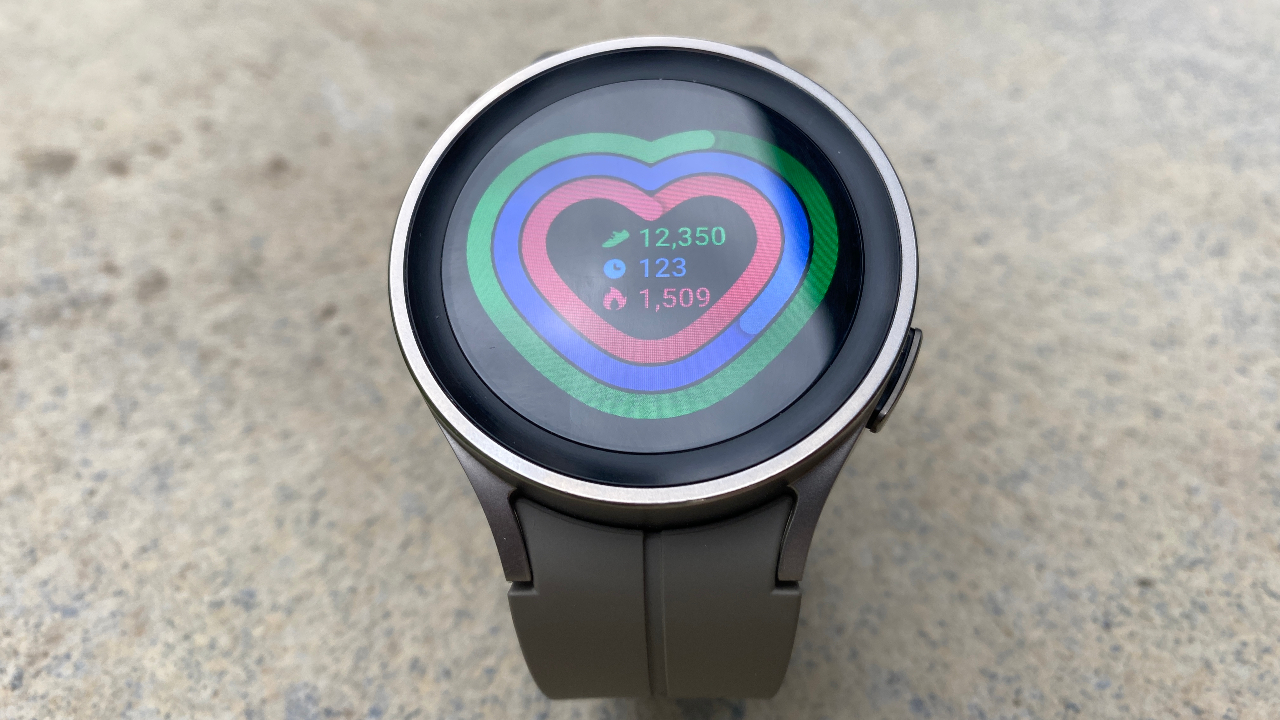
The Galaxy Watch 5 Pro has Samsung’s BioActive sensor, which as well as tracking the usual metrics, such as heart rate and blood oxygen saturation, offers body composition analysis, blood pressure and electrocardiogram measurements. These features were available on the Watch 4, but the 5 Pro can also track your skin temperature during sleep using an infrared sensor, though this feature is not available on the watch yet.
You will need to toggle some settings and accept a drop in battery life to turn on 24/7 heart rate tracking and blood oxygen measurements during sleep. It’s the same for the stress tracking on the watch, which only takes measurements on demand as standard.
I was disappointed by the body composition measurements, which were wildly different from those I have taken with other devices, including the Withings Body Cardio smart scale, one of the best smart scales. It could be vanity but, as a lanky marathoner who runs 110km a week and eats pretty well, I find it hard to believe I have an above-average body fat percentage of 25%, especially when the numbers I get from other devices are around 10%. The watch also seemed to overestimate my muscle mass, though I’m happy to take that!
Everyday activity is tracked and displayed using three heart-shaped rings on the watch, representing steps, active time and activity calories. You can set targets for these on the watch and it will alert you if you are inactive for long periods. The blood pressure and ECG measurements are available only with Samsung phones and require an app called Healthy Monitor. The blood pressure measurements also require regular calibration with a proper blood pressure cuff, which makes them less useful than they might sound.
Sports Tracking
With its rugged build and boosted battery life, the Watch 5 Pro should be a better sports watch than past Samsung devices, but it suffers from the same problems I’ve seen in the past. The native app lacks the variety of stats you’ll find on sports watches (lap pace for runners being a notable omission) and the accuracy of the GPS and heart rate tracking isn’t great.
The watch starts workouts at a single tap, which is convenient at times but not for outdoor activities where you want to ensure the GPS is locked on before beginning. To do this I had to tap settings immediately to essentially “pause” the workout before it began. Even when locked on I often experienced poor distance and pace tracking out running when compared to the Garmin Enduro 2 and Garmin Epix 2 devices. The Watch 5 Pro would throw up incorrect lap split times during the run and was often as much as 1.5km out by the end of a 15km-16km (9- to 10-mile) run. Looking at the GPS tracks for my runs the errors were easy to see, with GPS dropping out at times or the watch saying I was zigzagging across a canal rather than running alongside it.
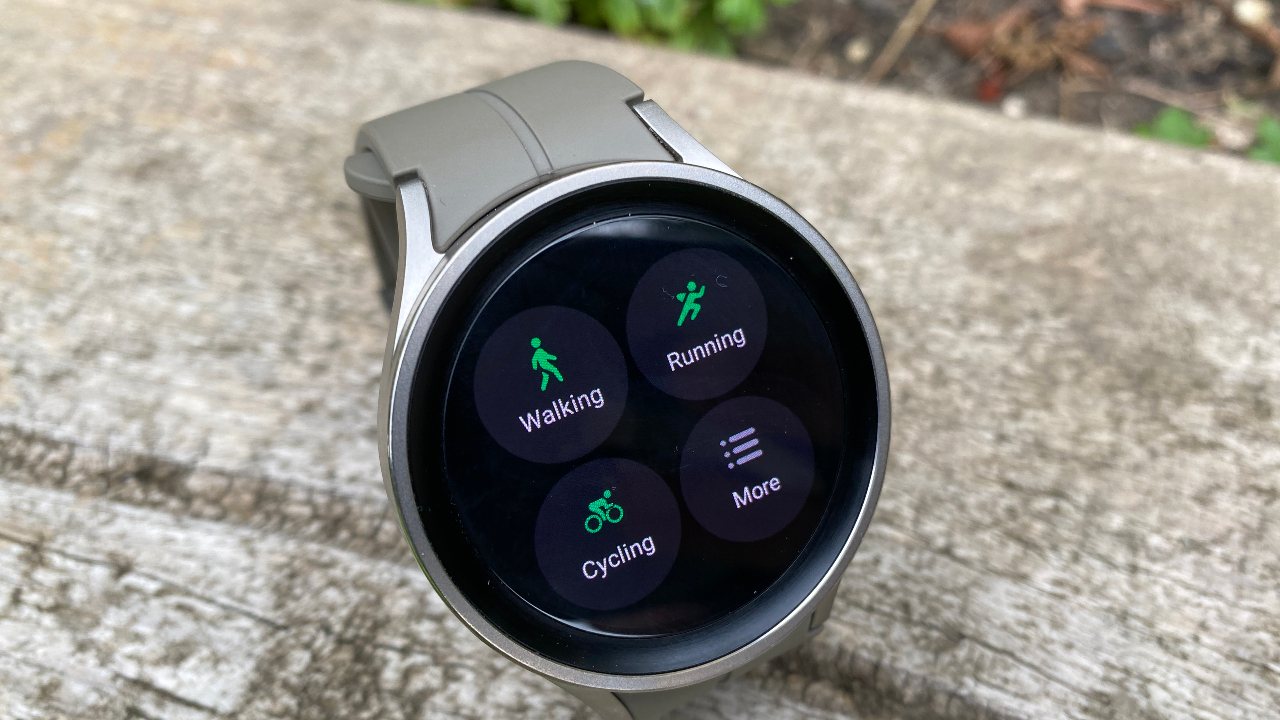
The heart rate tracking was better, though adjusting the buckle to get the tight but not uncomfortable fit needed for a good reading ahead of each workout was annoying. On most runs I would see a heart rate spike for the first five minutes or so, before it then locked on to the correct heart rate for the bulk of the run. At times the heart rate tracking was actually impressive, including an interval run where the reading from the Watch 5 Pro rose and fell largely in line with the measurements from a chest strap. However, there were also several runs, plus yoga and strength sessions, where it measured my heart rate incorrectly – and you can’t pair an external chest strap to the watch for better accuracy.
I also found the always-on screen dim and hard to read during outdoor exercise. I generally had to activate the screen by turning my wrist and holding my arm up to see my stats during runs and cycles, which is annoying to do on a bike in particular.
The Galaxy Watch 5 Pro has a basic interval mode you can set up, and also supports simple targets like calories, distance or time. You can upgrade the sports tracking using third-party apps like Strava or Runkeeper, but I’ve yet to come across anything impressive enough to turn it into a serious sports watch, whereas on the Apple Watch there are stand-out options like WorkOutDoors.
However, there is one area where the Galaxy Watch 5 Pro aims to equal or even surpass sports watches, which is in running technique stats. It measures things like your ground contact time and vertical oscillation natively from the wrist. When compared with the data tracked by a Garmin HRM-Pro Plus heart rate monitor, I found that the Watch 5 Pro showed the same trends in my stats throughout runs. For example, lower ground contact time when sprinting an interval vs when jogging a recovery section – even if the exact numbers differed across devices.
It’s an interesting addition to the watch and one that seems out of place given how basic the actual run tracking is. As a keen runner it’s fun to look at these stats from time to time, but I’d much rather Samsung improved the GPS accuracy or added a more useful metric like lap pace instead. Other new additions to the Watch 5 Pro are navigation with routes and a trackback feature to help you get back to your start point. This is currently only for hiking and biking, and uses Google Maps to provide turn-by-turn directions.
Sleep Tracking
Sleep tracking and coaching is one of the flagship features on the Galaxy Watch 5 Pro. After using it for seven days it will assign you an animal that shares your sleep characteristics and start a four-week coaching programme to help you improve your sleep.
I’m an easygoing walrus apparently, which means I spend a lot of time in bed while not sleeping, often during the day or early evening, and take a lot of daytime naps. This is not how I would describe myself. I never nap or spend time in bed during the day, and go to bed at around 10pm and try to sleep immediately, before being woken at 7am by my toddler who demands I get up straight away. I also don’t have sleep problems – thanks largely to all the running and the aforementioned toddler. Frankly I don’t consider myself a walrus, easygoing or otherwise.
However, the coaching programme still includes lots of useful tips to help improve your sleep in general. The tracking seems pretty sound and in line with what I can observe/remember about my sleep, which isn’t always easy to judge. One oddity is that I did get measurements of my blood oxygen saturation that dipped below 90% at night, which I’ve never seen on any other wearable. I’m not sure I trust Samsung’s accuracy here and, since it’s a feature that hits battery life hard, I turned off the SpO2 measurements.
Battery Life
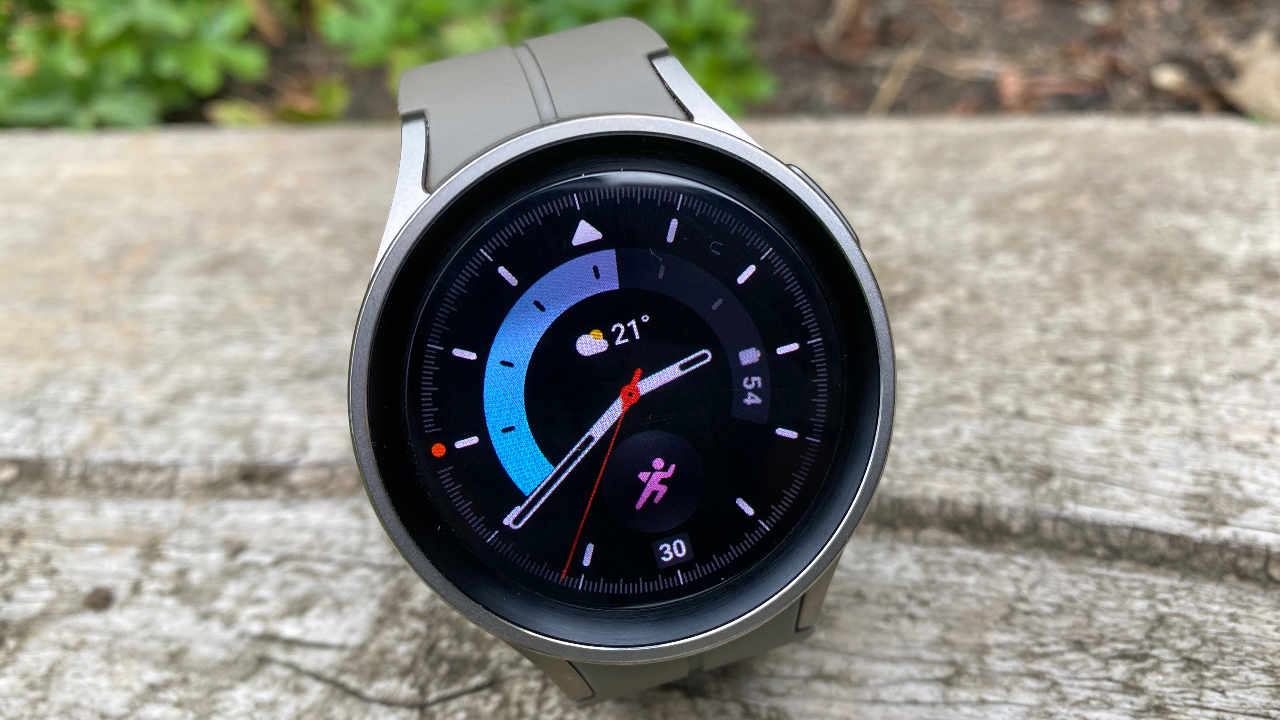
Samsung says the Watch 5 Pro will last for 80 hours of general use and 20 hours of GPS tracking. I found that it lasted me two days even with the always-on screen activated, continuous heart rate monitoring enabled and outdoor runs of an hour or more on each day. That’s good for a fully fledged smartwatch like this, and if you exercise less and turn off the always-on screen it would last three days comfortably.
Is The Samsung Galaxy Watch 5 Pro Worth It?
I’d opt for the Samsung Galaxy Watch 5, since the improved battery life and design of the Watch 5 Pro are not worth the extra outlay. If you simply want the best Wear OS smartwatch available then the Pro is the one to go for.
If you have plans to use it for serious sports tracking, I’d definitely swerve the Galaxy Watch 5 Pro. It does an acceptable job of logging your exercise, but all too often logged inaccurate data during my activities. A sportier smartwatch like the Garmin Venu 2 is a clear upgrade, even if you lose the smarts of Wear OS.
Obviously, the Apple Watch is restricted to iPhone users, but if you have the choice of phone as well as watch the Apple Watch Series 7 is a better smartwatch for sporty types. It has a smaller, more comfortable design, more accurate GPS, a better app store and a clearer always-on screen, and the native sports tracking is set to get a big improvement with watchOS 9.

Nick Harris-Fry is a journalist who has been covering health and fitness since 2015. Nick is an avid runner, covering 70-110km a week, which gives him ample opportunity to test a wide range of running shoes and running gear. He is also the chief tester for fitness trackers and running watches, treadmills and exercise bikes, and workout headphones.
